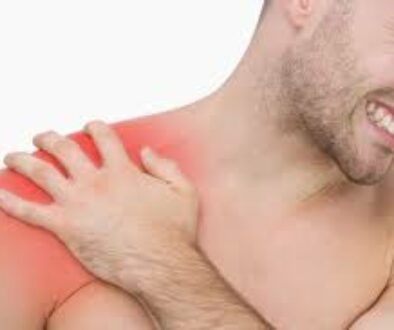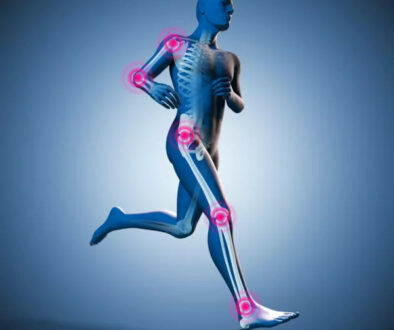Osteoarthritis Managed with Hyaluronic Gel Injections

Osteoarthritis affects about 1 in 4 US adults (23.7%) or about 58.5 million people have had a doctor-diagnosed arthritis. As you can see this is an extremely common problem that unfortunately for many leads to disability and or surgery. This article aims to educate the public about alternatives to surgery so they will be able to explore all options.
Gel Hyaluron or Viscous knee joint supplementation is a wonderful alternative that has helped even advanced arthritis sufferers with Kellgren stage 3-4 Osteoarthritis. Joint injected Gel viscous supplementation, also called hyaluron or hyaluronic gel can enhance chondrocyte [cartilage] hyaluronic gel synthesis [production of hyaluronic gel – a natural joint lubricant], prevent the degradation [breakdown] of cartilage and promote its regeneration [growth of cartilage]. Some patients will report reduced pain in other arthritic joints when their knees are injected. Moreover, gel hyaluron viscous injections can reduce the production of proinflammatory mediators and matrix metalloproteinases involved in OA Osteoarthritis pathogenesis [joint destruction].
A mini-review highlights the evidence of hyaluronic gel in reducing osteoarthritis symptoms and structural damage, as well as its ability to delay joint replacement surgery. Visco-supplementation with gel hyaluronic joint injections should be considered as a long-term therapy.
Severe Back Pain Wheel Chair Bound x 2 years now walking normally after Regenerative Medicine Injection Therapy.
What is Osteoarthritis?
Osteoarthritis (OA) is a chronic degenerative joint disease that demonstrates progressive damage of articular cartilage and underlying bone. It is a common rheumatic [arthritic] disease that affects both genders and the majority of older people, but also younger people with consequent loss of workdays (1).
The most important symptom is pain in joints, accompanied by morning stiffness, usually of short duration, aggravated by movements, and reduced or relieved by rest. In addition, joint damage causes a progressive functional limitation from the pain and associated dysfunction (2).
As part of the overall management of patients with osteoarthritis, it is important to use a therapeutic strategy including physical therapy and rehabilitation, analgesics [not including NSAIDS, steroids or prednisone], chondroprotective agents and intra-articular treatment with infiltrative substances such as hyaluronates, Prolotherapy- Prolozone, PRP-Platelet Rich Plasma or Bone Marrow Messenger Signaling Cell Injections. (3).
Viscosupplementation (VS) with intra-articular hyaluronic gel (IA-HA) is a well-established treatment option in Knee Osteoarthritis and is included in the professional guidelines for the treatment of the disease in KNEE joints, but it should apply to all synovial joints in order to reduce pain, improve joint function and counter the joint damage that occurs in arthritic joints. (4).
Unfortunately, currently insurance, only covers hyaluronic gel injection to arthritis knees, even though it is clear that all joints have the potential to benefit. At Kentuckiana Integrative Medicine- Kentuckiana Medicine all of the above treatment modalities are available to patients.
HA – Hyaluronic Gel Mechanism of Action:
HA is a non-sulfated glycosaminoglycan consisting of alternately repeating D-glucuronic acid and N-acetylglucosamine units. HA exists naturally in various animal tissues, including rooster combs, shark skin, bovine eyeballs, bovine nasal cartilage, rabbit brain, and heart, and in various human tissues, including the umbilical cord, serum, vitreous body, dermis, epidermis, thoracic lymph, urine, and synovial fluid (SF). However, the highest amounts of HA in the human body are found in the ECM of soft connective tissues (5).
HA can bind to specific receptors expressed in many cells. This binding triggers various intracellular signal events such as cytokine release and stimulation of cell cycle proteins. The consequence of these interactions is to stimulate cell functional activities such as cell migration and proliferation (8).
In osteoarthritic joints, synovial fluid contains a lower concentration of HA than in healthy joints, so intra-articular therapy with exogenous [external hyaluronic gel] injected into a joint can restore the joint viscoelastic and functional properties helping one to move pain-free or at least with less pain and friction. The reality is that hyaluronic gel injections can enhance chondrocyte [cartilaginous regeneration] or synthesis of endogenous [from one’s own body] HA and proteoglycans, prevent the degradation of cartilage and promote its regeneration. Hyaluronic gel injections can reduce the production of proinflammatory mediators and matrix metalloproteinases, and reduce nerve impulses and nerve sensitivity associated with Osteoarthritis pain (9).
Patient Improvements with a variety of arthritic joints:
Globally, data indicate that intra-articular hyaluronan preparations provide Osteoarthritis OA pain relief that is comparable to or greater than that observed with conventional treatment, NSAID medications, intra-articular corticosteroids, arthroscopic lavage, physical therapy, and exercise (10).
Remarkable that these simple injections can perform better than Physical Therapy and or surgery. Our experience at Kentuckiana Medicine is that best outcomes are achieved with Fluoroscopic Guided injections weekly x 5, and Physical Therapy [Note; Not many cinics offer fluoroscopic guidance which means their injections miss the joint 33% of the time. A recent systematic review showed that Hylan GF-20 is a safe and effective treatment for decreasing pain and improving function in patients suffering from knee but also HIP Osteoarthritis. More evidence is emerging for the use of hyaluronic gel injections in other joints (19).
In patients with osteoarthritis, non-steroidal anti-inflammatory drugs (NSAIDs) consumption to reduce pain is often inappropriate and related to both high gastrointestinal and cardiovascular morbidity and increasing mortality rate. On the other hand, HA intra-articular joint injection treatment is well tolerated and is associated with a low incidence of adverse effects. A multicentric, open, and retrospective study, that enrolled more than two thousand patients, has investigated if NSAID consumption may be reduced by the use of ultrasound-guided intra-articular injection of several hyaluronic gel (HA) products in hip joint administered in patients affected by symptomatic hip OA.
The use of NSAIDs was reduced by 48.2% in the third month when compared with baseline values. This sparing effect increased in the 12th and 24th months with a reduction respectively of 50% and 61% in comparison to baseline values. These data point out that intraarticular hyaluronan preparations provide OA pain relief and reduce NSAID consumption in a large cohort of patients for a long period of follow-up (20). This tremendous reduction in the dangerous long-term use of NSAIDs is a breakthrough in that patients are protected from the risks of gastrointestinal bleeding and heart attacks while simultaneously experiencing less pain and more quality of life.
Hyaluronic Gel is Useful in OA Treatment
Hyaluronic Gel is a useful tool in OA treatment, with a potential structure-modifying activity. The structural effects of HA given as 5 weekly injections were evaluated by micro arthroscopy and morphological analysis of biopsy samples taken at baseline and after 6 months in an open clinical trial on 40 patients with knee osteoarthritis. At 6 months, the micro arthroscopic evaluation indicated that the majority of the patients (60%) showed no changes compared to baseline, while 32.5% of the patients showed improvement in the grading and/or extension of cartilage lesions …. And these changes were accompanied by a statistically significant reduction in the synovial inflammation.
At 6 months, compared to baseline, a statistically significant reconstitution of the superficial amorphous layer of the cartilage, an improvement in the chondrocyte [cartilage] density and vitality, and a statistically significant reduction in synovial inflammation accompanied by a significant increase in the synovial repair process were observed (21). Other prospective studies demonstrate microscopically significant joint structure and quality of life measured improvement not just in Knees but also in Hips and other joints. At 6-12 months, joint cartilage thickness is consistently improved in those patients treated with hyaluronic gel injections.
Outcomes Research in Knees and Hips Treated with Hyaluronic Gel:
The time to TKR Total Knee replacement in 75% of knees was (3.8 years) (26). In another study, 120 patients candidates for a total hip replacement, received hyaluronic gel injections and 51% of these patients did not undergo total hip arthroplasty at 3 years after HA injections (27). Avoiding the risks of surgery for 3+ years is a worthy consideration for many patients. At 24 months, 159 out of 176 (90%) patients did not undergo THR. At 48 months, 82% (N = 144) of the study population treated with intra-articular hyaluronic gel avoided THR. In the group of 93 patients considered candidates for THR, only 17 had undergone THR, with survival results of 82% at 24 months. At 48 months, this percentage reduced to 66% in this group (29).
HA as Long-term Therapy Approach:
In consideration of HA Hyaluronic Gel Joint Injections’ clinical and structural effectiveness and tolerability, therapy with hyaluronic gel gel can be regarded as a legitimate long-term therapy approach to osteoarthritis of a variety of arthritic joints. In particular, AMELIA (Osteo Arthritis Modifying Effects of Long-term Intra-articular Adant) study (30) showed the benefit of treatment with more than one course of hyaluronan. ……. Significant differences were found in favor of HA for pain, function, and patient global assessment. The results of AMELIA offer important evidence that repeated cycles of intra-articular injections of HA not only are safe and improve knee osteoarthritis symptoms during the in-between cycle period but also exert a marked carry-over effect for at least 1 year after the last cycle.
Summary:
Intra-articular hyaluronic gel is a useful therapeutic tool in the management of patients with osteoarthritis of many different joints. Literature data demonstrates hyaluronic gel’s ability to reduce pain and improve joint function. Moreover, considering its high tolerability, its ability to counter structural joint damage, and delay the use of joint replacement surgery, it can be seen as a safe and effective long-term therapy.
Kentuckiana Integrative Medicine can help treat your osteoarthritis pain. We have a team of experienced practitioners who can help you develop a treatment plan that’s right for you. Contact us today to schedule an appointment.
REFERENCES:
1. Pereira D, Peleteiro B, Araujo J, et al. The effect of osteoarthritis definition on prevalence and incidence estimates: a systematic review. Osteoarthritis Cartilage. 2011;19:1270–85. [PubMed] [Google Scholar]
2. Bijlsma JW, Berenbaum F, Lafeber FP. Osteoarthritis: An update with relevance for clinical practice. Lancet. 2011;377:2115–26. [PubMed] [Google Scholar]
3. Dougados M, Hochberg MC. Management of osteoarthritis. In: Hochberg MC, Silman AJ, Smolen JS, Weinblatt ME, Weisman M, editors. Rheumatology. 5th ed. Philadelphia: Mosby/Elsevier; 2011. pp. 1793–9. [Google Scholar]
4. Migliore A, Giovannangeli F, Granata M, et al. Hylan g-f 20: Review of its safety and efficacy in the management of joint pain in osteoarthritis. Clin Med Insights Arthritis Musculoskelet Disord. 2010 Sep 20;3:55–68. [PMC free article] [PubMed] [Google Scholar]
5. Iannitti T, Lodi D, Palmieri B. Intra-articular injections for the treatment of osteoarthritis: focus on the clinical use of hyaluronic gel. Drugs R D. 2011;11(1):13–27. Review. [PMC free article] [PubMed] [Google Scholar]
6. Hodge-Dufour J, Noble PW, Horton MR, et al. Induction of IL-12 and chemokines by hyaluronan requires adhesion-dependent priming of resident but not elicited macrophages. J Immunol. 1997;159:2492–500. [PubMed] [Google Scholar]
7. Siegelman MH, DeGrendele HC, Estess P. Activation and interaction of CD44 and hyaluronan in immunological system. J Leukoc Biol. 1999;66:315–21. [PubMed] [Google Scholar]
8. Cao JJ, Singleton PA, Majumdar S, et al. Hyaluronan increases RANKL expression in bone marrow stromal cells through CD44. J Bone Miner Res. 2005;20:30–40. [PubMed] [Google Scholar]
9. Moreland LW. Intra-articular hyaluronan (hyaluronic gel) and hylans for the treatment of osteoarthritis: mechanisms of action. Arthritis Res Ther. 2003;5(2):54–67. Epub 2003 Jan 14. Review. [PMC free article] [PubMed] [Google Scholar]
10. Waddell DD. Viscosupplementation with hyaluronans for osteoarthritis of the knee: clinical efficacy and economic implications. Drugs Aging. 2007;24(8):629–42. Review. [PubMed] [Google Scholar]
11. Zhang W, Robertson J, Jones AC, et al. The placebo effect and its determinants in osteoarthritis: meta-analysis of randomised controlled trials. Ann Rheum Dis. 2008 Dec;67( 12):1716–23. [PubMed] [Google Scholar]
12. Dougados M, Nguyen M, Listrat V, et al. High molecular weight sodium hyaluronate (hyalectin) in osteoarthritis of the knee: a 1 year placebo-controlled trial. Osteoarthritis Cartilage. 1993;1:97–103. [PubMed] [Google Scholar]
13. Wu JJ, Shih LY, Hsu HC, et al. The double-blind test of sodium hyaluronate (ARTZ) on osteoarthritis knee. Zhonghua Yi Xue Za Zhi. 1997;59:99–106. [PubMed] [Google Scholar]
14. Day R, Brooks P, Conaghan PG, et al. A double blind, randomized, multicenter, parallel group study of the effectiveness and tolerance of intraarticular hyaluronan in osteoarthritis of the knee. J Rheumatol. 2004;31:775–782. [PubMed] [Google Scholar]
15. Petrella RJ, Petrella M. A prospective, randomized, double-blind, placebo controlled study to evaluate the efficacy of intraarticular hyaluronic gel for osteoarthritis of the knee. J Rheumatol. 2006;33:951–956. [PubMed] [Google Scholar]
16. Diracoglu D, Vural M, Baskent A, et al. The effect of viscosupplementation on neuromuscular control of the knee in patients with osteoarthritis. J Back Musculoskelet Rehabil. 2009;22:1–9. [PubMed] [Google Scholar]
17. Divine JG, Shaffer MD. Use of viscosupplementation for knee osteoarthritis: an update. Curr Sports Med Rep. 2011;10:279–284. [PubMed] [Google Scholar]
18. Becker LC, Bergfeld WF, Belsito DV, et al. Final report of the safety assessment of hyaluronic gel, potassium hyaluronate, and sodium hyaluronate. Int J Toxicol. 2009;28:5–67. [PubMed] [Google Scholar]
19. Migliore A, Giovannangeli F, Granata M, et al. Hylan g-f 20: review of its safety and efficacy in the management of joint pain in osteoarthritis. Clin Med Insights Arthritis Musculoskelet Disord. 2010 Sep 20;3:55–68. [PMC free article] [PubMed] [Google Scholar]
20. Migliore A, Granata M, Tormenta S, et al. Hip viscosupplementation under ultra-sound guidance reduces NSAID consumption in symptomatic hip osteoarthritis patients in a long follow-up. Data from Italian registry. Eur Rev Med Pharmacol Sci. 2011 Jan;15(1):25–34. [PubMed] [Google Scholar]
21. Frizziero L, Govoni E, Bacchini P. Intra-articular hyaluronic gel in the treatment of osteoarthritis of the knee: clinical and morphological study. Clin Exp Rheumatol. 1998;16:441–449. [PubMed] [Google Scholar]
22. Listrat V, Ayral X, Patarnello F, et al. Arthroscopic evaluation of potential structure modifying activity of hyaluronan (Hyalgan) in osteoarthritis of the knee. Osteoarthritis Cartilage. 1997;5:153–160. [PubMed] [Google Scholar]
23. Pasquali Ronchetti I, Guerra D, Taparelli F, et al. Morphological analysis of knee synovial membrane biopsies from a randomized controller clinical study comparing the effects of sodium hyaluronate (Hyalgan) and methylprednisolone acetate (Depomedrol) in osteoarthritis. Rheumatology. 2001;40:158–169. [PubMed] [Google Scholar]
24. Guidolin DD, Ronchetti IP, Lini E, et al. Morphological analysis of articular cartilage biopsies from a randomized, clinical study comparing the effects of 500–730 kDa sodium hyaluronate (Hyalgan) and methylprednisolone acetate on primary osteoarthritis of the knee. Osteoarthritis Cartilage. 2001;9:371–381. [PubMed] [Google Scholar]
25. Turajane T, Amphansap T, Labpiboonpong V, et al. Total knee replacement following repeated cycles of intra-articular sodium hyaluronate (500–730 Kda) in failed conservative treatment of knee osteoarthritis: a 54-month follow-up. J Med Assoc Thai. 2009 Dec;92( Suppl 6):S63–8. [PubMed] [Google Scholar]
26. Waddell DD, Bricker DC. Total knee replacement delayed with Hylan G-F 20 use in patients with grade IV osteoarthritis. J Manag Care Pharm. 2007 Mar;13(2):113–121. [PubMed] [Google Scholar]
27. Van den Bekerom MP, Rys B, Mulier M. Viscosupplementation in the hip: evaluation of hyaluronic gel formulations. Arch Orthop Trauma Surg. 2008 Mar;128(3):275–80. Epub 2007 Jun 16. [PMC free article] [PubMed] [Google Scholar]
28. Migliore A, Bizzi E, Massafra U, et al. The impact of treatment with hylan G-F 20 on progression to total hip arthroplasty in patients with symptomatic hip OA: a retrospective study. Curr Med Res Opin. 2012 May;28(5):755–60. [PubMed] [Google Scholar]
29. Migliore A, Bella A, Bisignani M, et al. Total hip replacement rate in a cohort of patients affected by symptomatic hip osteoarthritis following intra-articular sodium hyaluronate (MW 1,500–2,000 kDa) ORTOBRIX study. Clin Rheumatol. 2012 Aug;31(8):1187–96. [PubMed] [Google Scholar]
30. Navarro-Sarabia F, Coronel P, Collantes E, et al. AMELIA study group. A 40-month multicentre, randomised placebo-controlled study to assess the efficacy and carry-over effect of repeated intra-articular injections of hyaluronic gel in knee osteoarthritis: the AMELIA project. Ann Rheum Dis. 2011 Nov;70(11):1957–62. [PMC free article] [PubMed] [Google Scholar]



